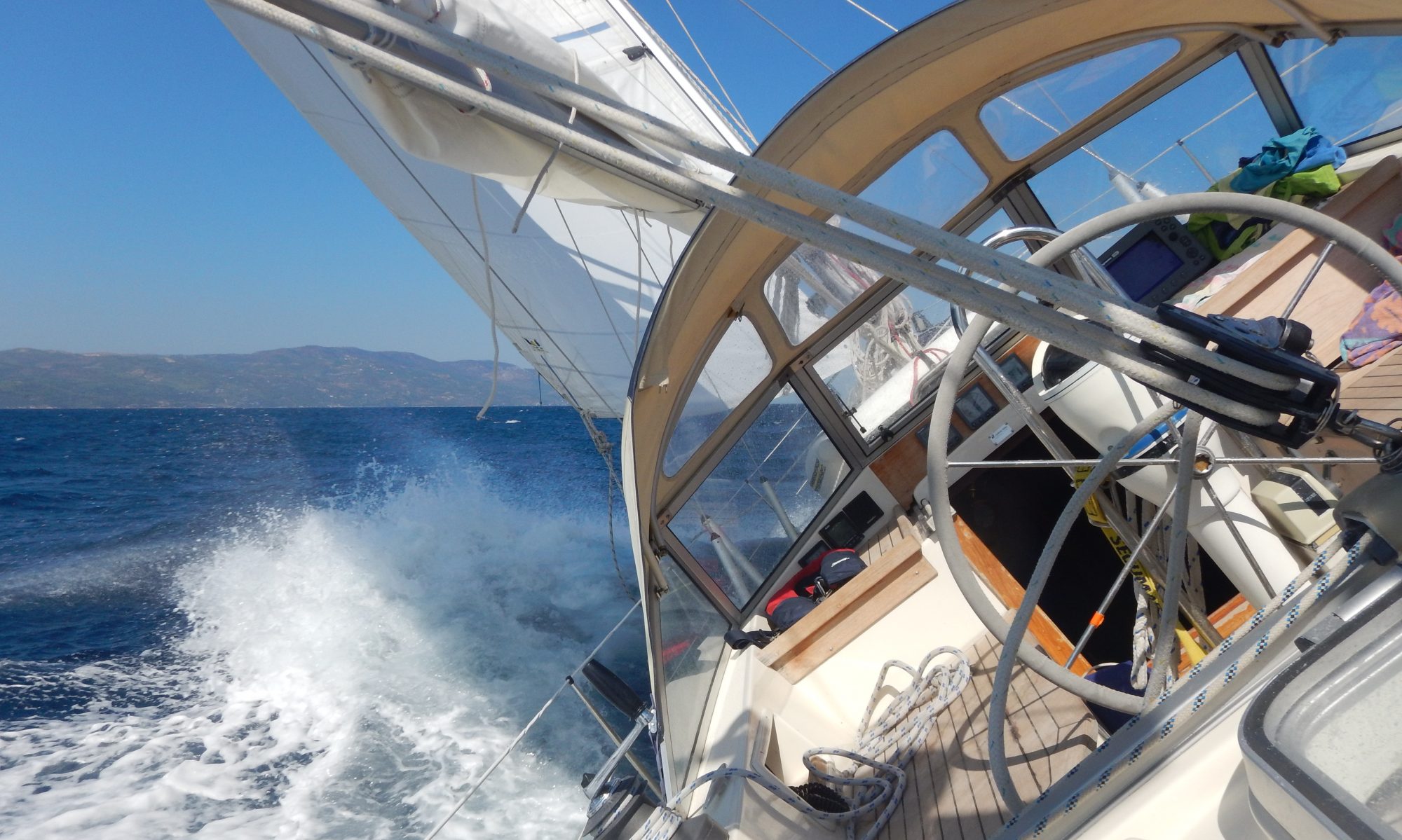Rudder removal and repair – part 3
This operation has not been straight forward but finally the rudder is remounted, hinge and nut covered in putty and the surface faired and ready for the final layers of primer and antifouling.
 The rudder is back in place,
The rudder is back in place,
 Hempels Epoxy Light Primer being applied on the removed rudder
Hempels Epoxy Light Primer being applied on the removed rudder
 Many layers of Hempels Epoxy Light Primer were applied to the skeg for osmosis prevention (…although judging by the condition of the hull, there is no sign of osmosis)
Many layers of Hempels Epoxy Light Primer were applied to the skeg for osmosis prevention (…although judging by the condition of the hull, there is no sign of osmosis)
 Skeg antifouling applied – rudder in the background ready for remounting.
Skeg antifouling applied – rudder in the background ready for remounting.
 Finding the right alignment was a bit tricky as can be seen by the bronze plates placed behind the hinge at the skeg. The two pieces at the rudder part (top of hinge) were probably not needed but left there for additional support. The amount of alignment and needed bronze plates will be different for every single HR352. Some won’t need any and others will need what you see above. The good thing is that the rudder works again smoothly as on a Laser dinghy.
Finding the right alignment was a bit tricky as can be seen by the bronze plates placed behind the hinge at the skeg. The two pieces at the rudder part (top of hinge) were probably not needed but left there for additional support. The amount of alignment and needed bronze plates will be different for every single HR352. Some won’t need any and others will need what you see above. The good thing is that the rudder works again smoothly as on a Laser dinghy.
 Rudder shaft nut covered in putty again (I have used Plastic Padding Glass Fibre Paste which worked quite well).
Rudder shaft nut covered in putty again (I have used Plastic Padding Glass Fibre Paste which worked quite well).
 Turniing on the lathe is fun. Here, the washer used for the lower bearing is being made (material is CuSn12).
Turniing on the lathe is fun. Here, the washer used for the lower bearing is being made (material is CuSn12).
 Rudder shaft stuffing box – new packing gland applied. The correct size would have been 9mm square. I could only get 8mm square and 10mm square, so I used one 8mm and one 10mm. Both were flattened a bit resulting in one 7X9 and one 11X9
Rudder shaft stuffing box – new packing gland applied. The correct size would have been 9mm square. I could only get 8mm square and 10mm square, so I used one 8mm and one 10mm. Both were flattened a bit resulting in one 7X9 and one 11X9


 Judging by the colour, I would guess that this is a clear case of dezincification.
Judging by the colour, I would guess that this is a clear case of dezincification.


